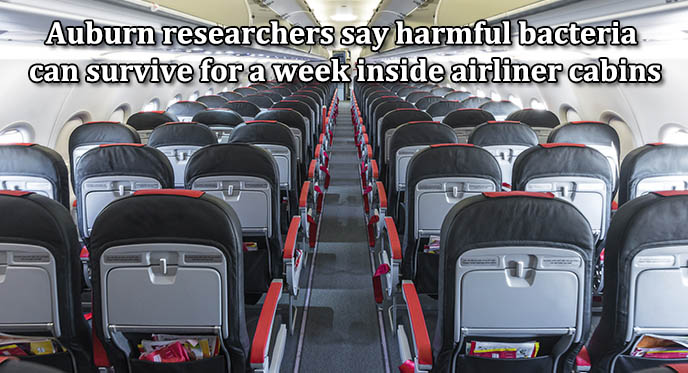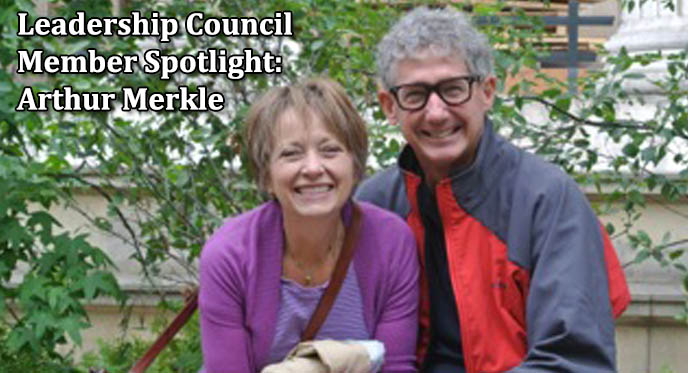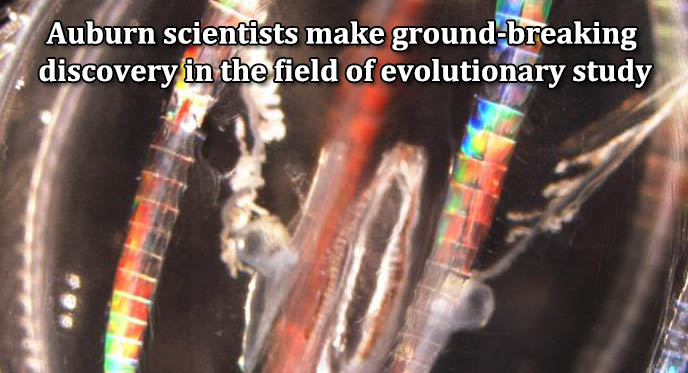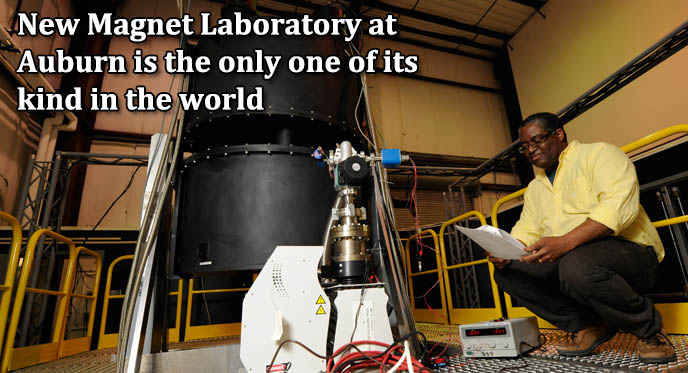|
Biological Sciences News:
Auburn scientists make ground-breaking discovery in the field of evolutionary study
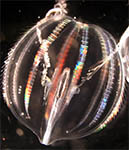 For more than a century, researchers believed that sponges represented the earliest living lineages of the animal tree. Thanks to modern genomic sequencing techniques, scientists in COSAM discovered that ctenophores, or comb jellies, are actually at the base of the animal kingdom. The research results have been published in the journal Nature and can be read here. For more than a century, researchers believed that sponges represented the earliest living lineages of the animal tree. Thanks to modern genomic sequencing techniques, scientists in COSAM discovered that ctenophores, or comb jellies, are actually at the base of the animal kingdom. The research results have been published in the journal Nature and can be read here.
"The placement of comb jellies at the base of the animal tree rewrites some of our very basic understanding of how animals first evolved on this planet," said Kenneth Halanych, a professor in the Department of Biological Sciences at Auburn. "The new genomic data overturns 150 years of scientific theories about the early evolution of animals."
Halanych and the team of scientists, including Kevin Kocot, postdoctoral scholar in the Department of Biological Sciences at Auburn, along with an international team of scientists led by Leonid Moroz, Distinguished Professor in the Department of Neuroscience at the University of Florida, studied the complete genome of a comb jelly, Pleurobrachia bachei, known as the "Pacific sea gooseberry." They were able to show that the species is remarkably distinct from other animals in that the genetic mechanisms used in ctenophore nerves and muscles are different from those seen in other animals.
"There is strong evidence that animal nervous systems, and maybe neurons, have evolved at least twice independently. Nerves are one of the basic features that we associate with most, but not all, animals. The fact that they may have evolved twice holds significant implications about how active life on this planet may have evolved," said Halanych. "This new genomic data suggests that some of our basic understanding about how animals have evolved to respond to their environment is in need of serious revision."
Halanych said the discovery that ctenophores form the base of the animal kingdom lineage, and that nervous and muscular systems may have evolved at least twice, implies that the earliest animals on earth may have been more complex than previously thought.
"Comb jellies, amazingly complex animals, are now understood to be at the base of the animal tree," said Halanych. "This finding rectifies a century of unanswered questions about these beautiful gelatinous animals."
Funding for the research was made possible by a four-year, $810,000 grant from NASA, secured by Halanych, Kocot and Moroz, for research into the evolution of multicellular organisms. The grant is titled, "Elucidating the early evolution of metazoans."
For more information on Halanych, the Stewart W. Schneller Endowed Chair in the College of Sciences and Mathematics at Auburn, visit his website.
Comb jelly photo by Leonid Moroz, University of Florida.
Halanych featured “Take 5” on Auburn homepage
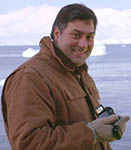 Ken Halanych, professor of biological sciences and the Stewart W. Schneller Endowed Chair in COSAM, was highlighted in the Take 5 feature on the Auburn homepage during the week of May 26 – 30. The feature comprises a brief biography followed by five questions that Halanych answered regarding his recent research discovery in evolutionary biology, his field travels, his views on teaching, and the major influences and motivating factors that drive his work. To read the Take 5, click here. Ken Halanych, professor of biological sciences and the Stewart W. Schneller Endowed Chair in COSAM, was highlighted in the Take 5 feature on the Auburn homepage during the week of May 26 – 30. The feature comprises a brief biography followed by five questions that Halanych answered regarding his recent research discovery in evolutionary biology, his field travels, his views on teaching, and the major influences and motivating factors that drive his work. To read the Take 5, click here.
Auburn researchers say harmful bacteria can survive for a week inside airliner cabins
 Disease-causing bacteria can linger on surfaces in commercial airplane cabins for up to a week, according to an Auburn University study presented by Biological Sciences Professor James Barbaree, at the annual meeting of the American Society for Microbiology. Disease-causing bacteria can linger on surfaces in commercial airplane cabins for up to a week, according to an Auburn University study presented by Biological Sciences Professor James Barbaree, at the annual meeting of the American Society for Microbiology.
Kiril Vaglenov, a graduate student working with Barbaree, conducted a two-year study—funded through the Federal Aviation Administration’s Airliner Cabin Environmental Research Center—to determine how long E. coli O157:H7 and methicillin-resistant Staphylococcus aureus, or MRSA, would survive on commonly touched surfaces under typical airplane conditions. A major airline carrier supplied researchers with material from armrests, plastic tray tables, seat-pocket cloth, window shades and metal toilet buttons.
"Our data show that both of these bacteria can survive for days on these surfaces, particularly the porous material such as armrests and seat-pockets," said Vaglenov. "Air travelers should be aware of the risk of catching or spreading a disease to other passengers and practice good personal hygiene."
In order for bacteria to be transmitted from a cabin surface to a person, it must survive the environmental conditions in the airplane. In the study Vaglenov simulated the temperature and humidity levels typically found during commercial flight.
MRSA survived the longest—168 hours—on material from the seat-back pocket, while E. coli O157:H7 lived for 96 hours on the material from the armrest.
"The point of this study is not to be alarmist, but to point out to the airlines the importance of providing a sanitary environment for travelers," said Barbaree, director of the study and mentor for Vaglenov. "We want to work with them to minimize the risks to human health."
The Auburn team is currently investigating how long pathogens that cause other diseases such as tuberculosis survive in an airplane environment.
Vaglenov said future steps include exploring effective disinfecting procedures and testing other surfaces and materials that have antimicrobial properties to determine if they can help reduce health risks.
The Airliner Cabin Environment Research Center is funded through a Federal Aviation Administration Cooperative Agreement titled "National Air Transportation Center of Excellence for Research in the Intermodal Transport Environment." The organization's vision for the future is that of an integrated global transportation system that is increasingly intermodal, where people and cargo safely, seamlessly and economically travel anywhere at any time by unique and personalized combinations of land, sea and air travel.
(Written by Mike Clardy, Office of Communications and Marketing)
“Mammals of Alabama” available at discounted price while supplies last
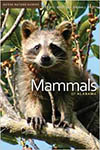 Biological Sciences Professor Troy Best authored a new book titled, “Mammals of Alabama.” The book was co-authored by the late Auburn University Professor of Biological Sciences Julian Dusi, and it is the first and only exhaustive guidebook to Alabama’s diverse mammalian fauna. The book was published by the University of Alabama Press in cooperation with the Alabama Wildlife Federation, and for a limited time, anyone interested in purchasing a copy can get one at a 30-percent discount through the Alabama Wildlife Federation by calling 800.621.2736. Biological Sciences Professor Troy Best authored a new book titled, “Mammals of Alabama.” The book was co-authored by the late Auburn University Professor of Biological Sciences Julian Dusi, and it is the first and only exhaustive guidebook to Alabama’s diverse mammalian fauna. The book was published by the University of Alabama Press in cooperation with the Alabama Wildlife Federation, and for a limited time, anyone interested in purchasing a copy can get one at a 30-percent discount through the Alabama Wildlife Federation by calling 800.621.2736.
The book is also available on the Alabama Wildlife Federation website and on Amazon.com.
Written for anyone with an interest in mammalian diversity within the state, "Mammals of Alabama" serves as a guide to species identification and includes hundreds of photos and fun facts.
“This book is for the people of Alabama who have an interest in their natural heritage. It’s a 496-page volume that includes all of the mammal species of Alabama that occur, once occurred, or may occur, with the exception of prehistoric species,” said Best. “Examples of some fun facts in the book include details about armadillos, such as they always have four identical quadruplet babies; and they are kind of unique in that they have peg- like teeth, unlike the sharp teeth of a dog, and their shells are made out of the same material as our fingernails. There is also information about bats, such as the fact that they may live more than 30 years, and on average they live 15 or 20 years; and there is even information in the book about how to get bats out of the attic.”
Best, who is the curator of mammals for the Auburn University Museum of Natural History, said there are approximately 80 mammals that occur or recently occurred in the state, and he cited the red wolf as an example of a species that is no longer found in Alabama.
“The last wolves in the state were killed in Walker County. They are now critically endangered and only occur in the wild in North Carolina, but they once occurred across the Southeastern U.S. Of course, bison and elk once occurred here as well,” said Best. “And there are no recent records of cougars in the state, although there are verified sightings. We just don’t know if the cougars that have been sighted are actually wild animals or not. The population in Florida disperses about 400 miles, and we are almost exactly 400 miles from their range in Florida, so it’s certainly possible.”
The book is ideal for libraries, classrooms and outdoor enthusiasts such as hunters and hikers, and it includes hundreds of professional, close-up color specimen photographs of both living animals in their natural habitats and skull plates, making identification of animals easy.
Chemistry & Biochemistry News:
Shannon named next chairman of the Department of Chemistry and Biochemistry
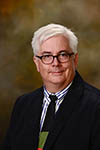 Curtis Shannon, who is the Andrew T. Hunt Professor of Chemistry, has been named the next chairman of the Department of Chemistry and Biochemistry. A faculty member at Auburn since 1991, Shannon has directed the research of 30 graduate students and postdocs. His research program involves the study of chemically modified electrode surfaces. One current research focus is on the use of electrochemical methods such as square wave voltammetry for the detection of proteins. His research group also studies the electrodeposition of chemical libraries to facilitate the discovery of new solid-state materials. Other research interests include polyoxometalate chemistry and surface enhanced Raman scattering. His research has been supported by the National Science Foundation, Petroleum Research Fund, Department of Energy and the United States Department of Agriculture. He has published papers in the Journal of the American Chemical Society and Langmuir, among others. He is a past winner of the Society of Analytical Chemists of Pittsburgh award and has spent sabbaticals at University of Texas at Austin and the Georgia Institute of Technology. Curtis Shannon, who is the Andrew T. Hunt Professor of Chemistry, has been named the next chairman of the Department of Chemistry and Biochemistry. A faculty member at Auburn since 1991, Shannon has directed the research of 30 graduate students and postdocs. His research program involves the study of chemically modified electrode surfaces. One current research focus is on the use of electrochemical methods such as square wave voltammetry for the detection of proteins. His research group also studies the electrodeposition of chemical libraries to facilitate the discovery of new solid-state materials. Other research interests include polyoxometalate chemistry and surface enhanced Raman scattering. His research has been supported by the National Science Foundation, Petroleum Research Fund, Department of Energy and the United States Department of Agriculture. He has published papers in the Journal of the American Chemical Society and Langmuir, among others. He is a past winner of the Society of Analytical Chemists of Pittsburgh award and has spent sabbaticals at University of Texas at Austin and the Georgia Institute of Technology.
During his career at Auburn, Shannon has been involved in several collaborations with university faculty, including colleagues in the Department of Chemistry and Biochemistry, the Department of Physics, the Department of Chemical Engineering and the Department of Materials Engineering. Outside the laboratory, Shannon has worked with colleagues at Tuskegee University on STEM outreach efforts in the Black Belt region of Alabama, as well as with the Auburn Prison Arts and Education project developing and teaching science courses to inmates at several prisons in Alabama.
Shannon received a bachelor of science in chemistry from California State University, Fullerton, and a doctorate in analytical chemistry from the University of Texas in Austin. He completed postdoctoral training at the Fritz Haber Institut in Berlin, Germany, under the direction of 2007 Nobel Prize in Chemistry recipient Gerhardt Ertl, and at the University of Cincinnati.
His term as chair begins Aug. 15. For more information on Shannon, visit his website.
Acevedo appointed as first Worley Professor
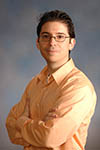 Associate Professor Orlando Acevedo has been selected the inaugural S. D. and Karen Worley Professor in the Department of Chemistry and Biochemistry. The five-year term of the appointment begins in August. Emeritus Professor and Mrs. Worley created the endowed professorship to support superior faculty who teach in the fields of organic, physical or polymer chemistry, to strengthen the research and teaching programs of the Department of Chemistry and Biochemistry, and to recognize strong commitment to instruction, research and service of high quality. Associate Professor Orlando Acevedo has been selected the inaugural S. D. and Karen Worley Professor in the Department of Chemistry and Biochemistry. The five-year term of the appointment begins in August. Emeritus Professor and Mrs. Worley created the endowed professorship to support superior faculty who teach in the fields of organic, physical or polymer chemistry, to strengthen the research and teaching programs of the Department of Chemistry and Biochemistry, and to recognize strong commitment to instruction, research and service of high quality.
Acevedo is an organic chemist who researches the application and development of new computational tools that target organic and enzymatic catalyst design, alternative environmentally friendly solvent design, and drug discovery. His research group probes fundamental problems in organic and medicinal chemistry, such as elucidation of enzymatic reactions, controlling enantioselectivity for chiral compounds, transition structure prediction, de novo drug design of high-affinity inhibitors, and origins of solvent effects.
Acevedo received his doctorate at Duquesne University in 2003 and was a postdoctoral associate at Yale University from 2003-2006.
Geology & Geography News:
Petroleum geologists student chapter chosen as one of top three in the world
 The Tulsa-based American Association of Petroleum Geologists has announced that Auburn's student chapter in the Department of Geology and Geography has been selected as one of the top chapters in the world. The selection was based on student accomplishments and activities for the past year. Auburn's student chapter placed in the top three chapters in the United States and in the top six in the world. For more about the American Association of Petroleum Geologists, click here. The Tulsa-based American Association of Petroleum Geologists has announced that Auburn's student chapter in the Department of Geology and Geography has been selected as one of the top chapters in the world. The selection was based on student accomplishments and activities for the past year. Auburn's student chapter placed in the top three chapters in the United States and in the top six in the world. For more about the American Association of Petroleum Geologists, click here.
Mathematics & Statistics News:
Kuperberg invited to deliver plenary talks at two international conferences
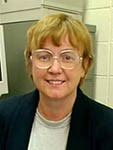 Professor Krystyna Kuperberg was invited to deliver plenary talks at two international math conferences this summer, the RTG Research Conference Logic, Dynamics, and Their Interactions II, and the 6th Podlasie Conference on Mathematics. The RTG conference, which is partially sponsored by the National Science Foundation, will take place in June at the University of North Texas in Denton, and will highlight descriptive set theory, ergodic theory, dynamical systems and other related topics. For more information on the RTG conference, click here. Professor Krystyna Kuperberg was invited to deliver plenary talks at two international math conferences this summer, the RTG Research Conference Logic, Dynamics, and Their Interactions II, and the 6th Podlasie Conference on Mathematics. The RTG conference, which is partially sponsored by the National Science Foundation, will take place in June at the University of North Texas in Denton, and will highlight descriptive set theory, ergodic theory, dynamical systems and other related topics. For more information on the RTG conference, click here.
The Podlasie Conference will take place in July at the University of Bialystok in Poland. The conference is a biennial international event organized by the Bialystok Branch of the Polish Mathematical Society in cooperation with Bialystok University of Technology. The conference is supported by the Ministry of Science and Higher Education of the Republic of Poland. For more information, go to the website.
Physics News:
New Magnet Laboratory at Auburn is the only one of its kind in the world
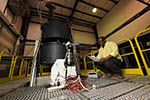 During the past five years, Edward Thomas, the Lawrence C. Wit Professor of Physics, said he developed a new mantra, “No stress, no stress, no stress.” By repeating the phrase over and over again, he had hoped to stave off any ill effects that might result from overseeing the creation of the new Magnet Laboratory at Auburn University, which included the development and delivery of a 6,000-pound superconducting magnet, the only one of its kind in the world. During the past five years, Edward Thomas, the Lawrence C. Wit Professor of Physics, said he developed a new mantra, “No stress, no stress, no stress.” By repeating the phrase over and over again, he had hoped to stave off any ill effects that might result from overseeing the creation of the new Magnet Laboratory at Auburn University, which included the development and delivery of a 6,000-pound superconducting magnet, the only one of its kind in the world.
The new lab houses the Magnetized Dusty Plasma Experiment, a one-of-a-kind facility that will support plasma physics research for Auburn University students and researchers, as well as for a diverse team of national and international researchers who will come to Auburn to perform experimental and theoretical studies. More than a dozen Auburn students, including undergraduates, graduates and postdoctoral-researchers, were involved in the design and implementation of the new laboratory, and as the research evolves over the next several years, Thomas envisions opportunities for a long line of undergraduate and graduate student researchers.
“The superconducting magnet in the laboratory is a one-of-a-kind device,” said Thomas. “There have been a half-a-dozen or so experiments around the world that have tried to explore the physics of magnetized dusty plasmas. We think of our device as the first, second-generation device, where we have taken a lot of the lessons we have learned on earlier devices and incorporated them into the design of this facility and tried to put together something that is pretty unique. The uniqueness stems from the fact that we can do something that no other device can do, which is shape the structure of the magnetic field.”
The magnet arrived in late February, and the excitement felt by Thomas and his fellow researchers was palatable as they stood on a loading dock, watching the back of a delivery truck and anxiously waiting for the first glimpses of the 6,000-pound superconducting monster. The installation process was painstakingly tedious as the team worked to ensure not a scratch would harm the magnet even as a small crane lowered the beast into a pre-constructed platform in the lab.
Once installed, the magnet was connected to a series of pumps and tubes that carry compressed, gaseous helium to the coils inside the magnet. The compressed helium serves to cool the magnetic coils to extremely low temperatures.
“We had to get the coils cold before using the magnet. They went from room temperature to below 5.5 degrees Kelvin, or negative 450 degrees Fahrenheit. That’s about a 520-degree drop, and it took about two weeks to bring the temperature down,” said Thomas. “The whole process has been nerve-racking. Once the magnet was installed, you would think we would breathe a sigh of relief, but we were still holding our breath as we watched the temperature drop. We charted the temperature every four hours or so. The critical temperature point is 6.4 Kelvin. Once we get there, the magnet fields become superconductors. We breathed a big sigh of relief once the temperature was right, and at that point, we energized the thing.”
On Tuesday, April 15, the Magnet Lab energized the magnetic fields for the first time. By the end of the following day they had successfully charged the magnet to their primary target of a 2.0 Tesla field strength. Over the next few months, the team will slowly raise the field to its maximum of around 4.0 Tesla, marking the finale of a five-year development, design and installation process that, despite his no-stress-mantra, left Thomas with a few new grey hairs.
The Auburn University team of scientists will spend the next several months better familiarizing themselves with the Magnetized Dusty Plasma Experiment Laboratory and conducting experiments that have never been done before in the area of dusty plasma. Plasma, which is one of the four states of matter and the most abundant in the visible universe, is what makes up a bolt of lightning, most stars, and it is a primary component of the sun. A plasma that contains electrically charged micro-particles, or dust grains, can form a “dusty” plasma. The rings of Saturn and the long tails of comets are examples of dusty plasmas in nature.
“Some of the things we hope to discover are how to control the growth, formation and trapping of dust. If we can control the behavior of dust, then we can see how to use dust as a tool. Only a few experiments in the world have looked at the charged, magnetized particles, and that is the primary mission of the device,” said Thomas. “The other part of the mission of the device is to study the fundamental physics of strongly magnetized plasmas. Because of the magnetic field strength that we can produce, and because that magnetic field can be produced in steady state, meaning the magnetic field strength remains constant, we can perform long-duration experiments at high magnetic fields, which is something fairly unique in the plasma physics community.”
The process of making the Magnetized Dusty Plasma Experiment a reality began with a series of conversations between Thomas and his collaborators at the University of Iowa, the University of California, San Diego, and the National Science Foundation.
“We were at a meeting and we were talking about new types of plasma physics experiments and the idea for this unique American facility where we could actually study highly magnetized dusty plasma came up. After a series of conversations over the course of two years, we were in a position to apply for a National Science Foundation Major Research Instrumentation award,” said Thomas.
Thomas secured an MRI award from NSF in 2011. The total amount awarded was $2.1 million, which included a 30-percent cost-sharing by Auburn University. The funding represented one of the largest MRI projects ever awarded to Auburn University. For the next two-and-a-half years, the award allowed the group at Auburn to design the new laboratory facility and, in collaboration with private industry and the Massachusetts Institute of Technology Plasma Science and Fusion Center, design and construct the superconducting magnet.
“We have worked very hard to establish a team of collaborators. We have potential partners from Europe, from Asia, and we are continuing to build our partnerships with our U.S. collaborators. It is our hope that by the end of 2014 to early 2015, we will provide an opportunity for the first of those collaborators to come to Auburn and begin doing experiments here,” said Thomas. “This device, in its conception, in its design, is really unique. I am fairly comfortable saying there is no other experimental configuration quite like this - to explore the physics that we are trying to do - in the world. We are quite proud of the fact that we think we have built something that is a really unique research instrument for the entire plasma physics research community.”
The new Magnet Lab is one component of the Plasma Sciences Laboratory which is run jointly by Thomas and Uwe Konopka, associate professor of physics. For more information on Thomas, visit his website. For more information on the Plasma Sciences Laboratory at Auburn, click here.
|
COSAM News:
Gordon named Goldwater Scholar
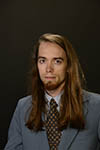 Graham Gordon, a COSAM Honors College student double-majoring in mathematics and physics, has been chosen as a 2014 Barry M. Goldwater Scholar, an honor that is only bestowed to a approximately 300 students nationwide each year. Graham Gordon, a COSAM Honors College student double-majoring in mathematics and physics, has been chosen as a 2014 Barry M. Goldwater Scholar, an honor that is only bestowed to a approximately 300 students nationwide each year.
The scholarship is widely considered the most prestigious award in the United States for undergraduates in STEM disciplines.
Gordon, of Aiken, S.C., conducts research under the guidance of Professor Peter Nylen in the Department of Mathematics and Statistics. He is also an undergraduate teaching assistant with Professor Joe Perez in the Department of Physics, and he previously participated in a research group studying computational Rydberg atomic physics.
“I would like to thank Dr. Nylen for being an ideal research adviser and Dr. Paul Harris (associate director for national prestigious scholarships) for guiding me during the application process,” Gordon said. “Anyone pursuing research in a STEM field should consider this scholarship. Applying is an enlightening experience itself.”
Gordon’s primary research involves partial distance matrix completion with multilateration applications to wireless sensor network localization, and his publications include an article in the Journal of Physics B: Atomic, Molecular and Optical Physics.
“As Graham’s undergraduate research mentor, I told him I thought the most important thing was that he enjoy learning about his chosen topic,” Nylen said. “I think he does indeed love mathematical research. Graham is also blessed with analytic skills and the ability to express ideas in the written word. It has been a privilege to work with him.”
Gordon will travel to Budapest, Hungary, in June to participate in the Budapest Semesters in Mathematics summer program at the Technical University of Budapest.
“Graham has already accomplished a great deal during his first three years at Auburn,” said Melissa Baumann, Auburn University assistant provost and director of the Honors College. “The Goldwater Scholarship is well-deserved recognition of his academic talents and we anticipate great future success for him as he pursues his studies in physics and mathematics.”
Harris said, “It was a pleasure assisting Graham with his application and it is especially gratifying to see someone who has worked so hard in the classroom, in the research lab and in his after-school tutoring program with Loachapoka Middle School pay off with this national recognition.”
(Written by Charles Martin, Office of Communications and Marketing)
In memoriam: Nancy Lynn Wit
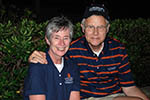 COSAM mourns the loss of Nancy Wit, wife of Lawrence Wit, a retired professor of biological sciences and former COSAM associate dean for Academic Affairs. Lawrence Wit retired in September 2012 after a 37-year career at Auburn, and his late wife, Nancy, was a part of the COSAM family. All of us in COSAM extend our deepest condolences to the entire Wit family as they mourn the loss of Nancy, who was a devoted wife, mother, grandmother, sister and friend. Her obituary is reprinted below: COSAM mourns the loss of Nancy Wit, wife of Lawrence Wit, a retired professor of biological sciences and former COSAM associate dean for Academic Affairs. Lawrence Wit retired in September 2012 after a 37-year career at Auburn, and his late wife, Nancy, was a part of the COSAM family. All of us in COSAM extend our deepest condolences to the entire Wit family as they mourn the loss of Nancy, who was a devoted wife, mother, grandmother, sister and friend. Her obituary is reprinted below:
Nancy Lynn Wit, 67, of Auburn, celebrated her birthday by going home to be with her Lord on May 25, 2014. The celebration service was held on Wednesday, May 28, at Lakeview Baptist Church in Auburn. Visitation was held before the service at Lakeview, and a private burial for family was held following the service. Nancy was born in Chicago, Ill., on May 25, 1947. She was the beloved wife of Larry for 45 years. She is survived by her husband, her children Jeffrey Christopher (Tricia), Judd Timothy (Meredith), and Karen Lynn, and her grandchildren, Cade Tyler, Cameron Grace, Josie Kate, Carter Davis and Cooper Dalton. She is also survived by her siblings, Rudy (Ruth) Van Der Laan and Jeannette (Duane) Kelderman, and other family and friends. Nancy is preceded in death by her infant son, Jason Carl, her parents, Cornelius and Wilhelmina Van Der Laan, and her brother, William Van Der Laan. In lieu of flowers, memorial donations may be given to Women's Hope Medical Clinic, 820 Stage Road, Auburn AL, 36830 or the College of Sciences and Mathematics General Scholarship Fund at Auburn University, 315 Roosevelt Concourse, Auburn, AL 36849. Funeral arrangements were handled by Jeffcoat-Trant Funeral Home in Opelika.
COSAM student receives Fulbright Scholarship
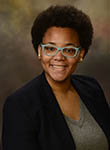 Three Auburn University Honors College students, including Jamesa Stokes, a senior physics major, have been awarded Fulbright Scholarships to continue their studies in the United Kingdom and Germany this summer and fall. Three Auburn University Honors College students, including Jamesa Stokes, a senior physics major, have been awarded Fulbright Scholarships to continue their studies in the United Kingdom and Germany this summer and fall.
Stokes will conduct research at the German Space Agency’s Institute of Structures in Design in Stuttgart, Germany. An Atlanta native, Stokes has completed internships with Goddard Space Flight Center in Greenbelt, Maryland, and the Jet Propulsion Laboratory in Pasadena, California. In addition, she was a Benjamin A. Gilman International Scholar to Reutlingen, Germany. Her research investigates the behavior of fiber-oriented ceramics during hyper-sonic flight in order to develop better thermal protection systems for spaceflight vehicles.
“I studied in Germany in the fall of 2012, and it was my first time traveling outside of the country, so it was truly an amazing experience,” Stokes said. “Now I can go back and experience more of Germany while doing research that interests me at the same time.”
The Fulbright Program is the flagship international educational exchange program sponsored by the U.S. government and is designed to increase mutual understanding between the people of the United States and the people of other countries. Recipients are selected on the basis of academic or professional achievement, as well as demonstrated leadership potential.
Auburn has had 10 Fulbright recipients in the past five years, and this year marks the first time with three winners in one year. To read more, including information about the other two winners from Auburn University, click here.
(Written by Lindsay Miles)
Multiple COSAM students honored at Phi Kappa Phi awards ceremony
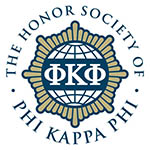 Phi Kappa Phi, the nation's oldest, largest, and most selective collegiate honor society for all academic disciplines, recently held the yearly initiation and awards ceremony at Auburn. During the ceremony, six Susan Stacy Entrenkin Yates scholarship awards were presented, and of the six recipients, four were from COSAM, including: Katelyn Ahern, Susan Chestnut, Meredith McCray and Emily Pipan. The awards are presented annually to outstanding junior students at Auburn University and are named in memory of the mother of Mr. S. Blake Yates, a long-time member of the Auburn chapter of Phi Kappa Phi. Criteria include scholarship, activities and character. Phi Kappa Phi, the nation's oldest, largest, and most selective collegiate honor society for all academic disciplines, recently held the yearly initiation and awards ceremony at Auburn. During the ceremony, six Susan Stacy Entrenkin Yates scholarship awards were presented, and of the six recipients, four were from COSAM, including: Katelyn Ahern, Susan Chestnut, Meredith McCray and Emily Pipan. The awards are presented annually to outstanding junior students at Auburn University and are named in memory of the mother of Mr. S. Blake Yates, a long-time member of the Auburn chapter of Phi Kappa Phi. Criteria include scholarship, activities and character.
Additionally, Ashley Nutt, a spring semester biomedical sciences graduate of COSAM, was named the Phi Kappa Phi Most Outstanding Senior Scholar. The award is presented annually to the most outstanding senior student at Auburn University, and criteria include scholarship, activities, character and a minimum 3.69 GPA. Nutt finished with a 4.0 GPA and throughout her collegiate career, she dedicated time to tutoring her peers on a weekly basis in a wide range of subjects including genetics, chemistry and mammalian physiology. She completed a number of research projects during her time at Auburn, including studying the psychological effects of HIV and its epidemiology among mothers in Western Jamaica. She also worked in the lab of Sang-jin Suh, associate professor in the Department of Biological Sciences, where she conducted experiments aimed at understanding the pathogenesis of Pseudomonas aeruginosa. Nutt was accepted to several medical schools, and she plans to continue empowering her community through medicine and public health education. She said she feels very blessed to have had such a rewarding Auburn education and to have been mentored by so many talented people. For more information on Nutt, see the Take 5 feature that was published last year at this link.
Alumni News:
Eight COSAM alumni graduate from USA Medical School
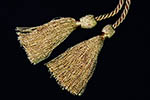 Eight COSAM alumni graduated this spring from the University of South Alabama College of Medicine. They are: Eight COSAM alumni graduated this spring from the University of South Alabama College of Medicine. They are:
- Dr. Benjamin M. Motz, biomedical sciences '10: Motz accepted a general surgery residency with the Carolinas Medical Center, in Charlotte, NC. He was the recipient of the Dean’s Award, the college’s highest honor, for accumulating the highest scholastic GPA during his four years in medical school. He is a member of Alpha Omega Alpha Honor Medical Society and received the following honors during graduation: the Outstanding Student in Anatomical Sciences; the Charles M. Baugh Award for outstanding achievement during medical biochemistry; and the John Donald Award in Surgery for demonstrating excellence in the surgical clerkship.
- Dr. Sarah Elizabeth Bragg, biomedical sciences '10: A member of Alpha Omega Alpha Honor Medical Society, Bragg will begin a medicine/pediatric residency program at the University of Alabama Medicine Center in Birmingham. She received the following awards during Honors Convocation: the Glasgow-Rubin Achievement Citation presented to women in the top 10 percent of the class; the Charles Urschel Achievement Award for excellence in physiology; the Microbiology and Immunology Achievement Award for outstanding academic performance in the course; the Hollis Wiseman Award for Excellence in Pediatrics; and the Richard W. Gurich Scholarship in recognition of professionalism and efficacy in patient care.
- Dr. Chad Cox, biomedical sciences '07: Cox will begin a transitional year at St. Mary’s Mercy Hospital in Livonia, Michigan.
- Dr. Kasey Sarah Gardner, biomedical sciences '10: A member of Alpha Omega Alpha Honor Medical Society, Gardner accepted a residency in internal medicine at Northwestern McGaw Hospital in Chicago. Gardner received the following honors: the Glasgow-Rubin Achievement Citation presented to women in the top 10 percent of the class; the John Desak Award presented to the highest-ranking female who is entering internal medicine; and the William Gardner Pathology Award for outstanding achievement in the course.
- Dr. Michael Erik Landman, biomedical sciences '09: Following one year of a preliminary internship in internal medicine with the University of South Alabama Hospital System in Mobile, Landman will start a radiology-diagnostic residency at Vanderbilt University Medical Center in Nashville.
- Dr. Matthew R. Madisetty, biomedical sciences '10: Madisetty will join an emergency medicine program with the Allegheny General Hospital in Pittsburg.
- Dr. James Robert Myer, zoology '10: Myer accepted an emergency medicine residency at the University of Virginia in Charlottesville.
- Dr. Robert Lee Smola Jr., biomedical sciences '09: A member of Alpha Omega Alpha Medical Honor Society, Smola accepted a residency in internal medicine at the University of Alabama Medical Center in Birmingham. Smola received the Medical Assurance Award for excelling in patient communication.
Arboretum News:
Arboretum hosts joint meeting of Georgia and Alabama Plant Conservation Alliances
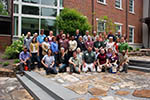 The Georgia and Alabama Plant Conservation Alliances met jointly for the first time May 1-2, on the Auburn campus. The meeting highlighted local efforts toward addressing plant conservation issues in both Alabama and Georgia and featured guest speakers from Atlanta Botanical Gardens, the Georgia Plant Conservation Alliance, the Alabama Plant Conservation Alliance and the Auburn University Donald E. Davis Arboretum. Participants also toured the Davis Arboretum where many native azaleas and other native plant species were in bloom, as well as the John D. Freeman Herbarium, which is housed in the Auburn University Museum of Natural History. The meeting culminated with a trip to Wadley, Ala., where attendees explored the plant life on a granite rock outcrop. The Georgia and Alabama Plant Conservation Alliances met jointly for the first time May 1-2, on the Auburn campus. The meeting highlighted local efforts toward addressing plant conservation issues in both Alabama and Georgia and featured guest speakers from Atlanta Botanical Gardens, the Georgia Plant Conservation Alliance, the Alabama Plant Conservation Alliance and the Auburn University Donald E. Davis Arboretum. Participants also toured the Davis Arboretum where many native azaleas and other native plant species were in bloom, as well as the John D. Freeman Herbarium, which is housed in the Auburn University Museum of Natural History. The meeting culminated with a trip to Wadley, Ala., where attendees explored the plant life on a granite rock outcrop.
Arboretum Photo contest winners announced
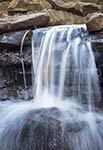 The Donald E. Davis Arboretum held the annual photo contest, and winners were recently announced. All participants were amateur photographers and each photo entry featured images of nature scenes from Alabama. Submissions were accepted in five categories and a cash award was given to the first place winner in the Arboretum category. Other winners received gift certificates to Cameragraphics in Auburn. The 2014 Arboretum Photo Contest winners are: “After the Rain” (pictured) by Angelina Smith, winner of the Arboretum category; “Sandhill Cranes to Roost” by Scott Clem, winner of the Birds and Mammals category; “Sarracenia Sunset” by Jenna Crovo in the Flora category; “Stormy Stars” by Nickey Jackson in the Landscape category; and “A Little Blue Sky in the Eye” by Julia Bartosh in the Other Wildlife category. To see all of the winning photos, click here. The Donald E. Davis Arboretum held the annual photo contest, and winners were recently announced. All participants were amateur photographers and each photo entry featured images of nature scenes from Alabama. Submissions were accepted in five categories and a cash award was given to the first place winner in the Arboretum category. Other winners received gift certificates to Cameragraphics in Auburn. The 2014 Arboretum Photo Contest winners are: “After the Rain” (pictured) by Angelina Smith, winner of the Arboretum category; “Sandhill Cranes to Roost” by Scott Clem, winner of the Birds and Mammals category; “Sarracenia Sunset” by Jenna Crovo in the Flora category; “Stormy Stars” by Nickey Jackson in the Landscape category; and “A Little Blue Sky in the Eye” by Julia Bartosh in the Other Wildlife category. To see all of the winning photos, click here.
Student Services News:
COSAM Welcomes new student advisor
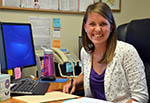 COSAM’s Office of Student Services welcomed a new academic advisor this month, Meredith Jones ’12. She received an undergraduate degree from COSAM in biomedical sciences and then attended Clemson University where she received a master of education with a focus in counselor education. COSAM’s Office of Student Services welcomed a new academic advisor this month, Meredith Jones ’12. She received an undergraduate degree from COSAM in biomedical sciences and then attended Clemson University where she received a master of education with a focus in counselor education.
“While I was a student, I worked for COSAM as a peer advisor. That was when my career path began to take a major shift; no longer did a future in dentistry excite me, but working with students gave me a new perspective and caused me to begin researching graduate programs that focused on higher education and student affairs,” said Jones. “On the first day of graduate school, our professors told us that 'no one ever gets their dream job out of grad school.' I, however, did! I am so excited to return to The Plains and to be working for the office that sparked my interest in advising!”
In addition to serving as a COSAM Peer Advisor while she was an undergraduate, Jones was also an orientation intern for COSAM, a role that positioned her to advise incoming students on academic-related matters, such as curriculum and course scheduling, as well as a COSAM Leader. The COSAM Leaders are a group of exemplary COSAM students who serve as the official ambassadors for the college.
Outside of COSAM, she worked for Auburn’s First Year Experience Office, serving as a peer instructor for “The Auburn Experience,” which is an extended orientation course. As such, she encouraged students to utilize campus services in order to be successful in their academic careers.
At Clemson, she served as a graduate assistant for Healthy Campus, a program with a mission to create a culture and/or environment that fosters health and wellness, safety, and sustainability. She was also a graduate assistant for the Dean of Students Office in the EMpower Clemson program, which is a student-led effort providing resources about alcohol safety to students. Additionally, she completed an internship with Clemson’s Advising Center in the College of Engineering and Sciences before spending one month in Sheffield, England, in an internship program in the English Teaching Centre at the University of Sheffield. She also finished a practicum with Greek Life and Student Organizations at Furman University.
She has served in numerous leadership roles including as vice president of Chi Sigma Alpha Student Affairs Honor Society at Clemson and as the treasurer of Rho Lambda National Sorority Leadership Society at Auburn. Since June 2013, she has served on the National Academics Committee for her social sorority, Delta Zeta. Furthermore, she is a Clemson University Walter T. Cox Graduate Student Award nominee, a member of the Order of Omega Greek Honor Society, and is listed in Who’s Who Among Students in American Universities & Colleges.
COSAM welcomes its newest member of the academic advising team and extends to her a heartfelt WAR EAGLE!
Development News:
Leadership Council member Spotlight: Arthur Merkle
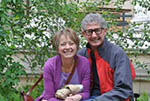 Dr. Arthur Merkle, geology ’79, is a longtime COSAM Dean’s Leadership Council member and dentist in Fort Walton Beach, Fla. He said he joined the council at the encouragement of fellow member Herb Martin, geology ’79, and Bob Cook, professor emeritus in the Department of Geology and Geography. Dr. Arthur Merkle, geology ’79, is a longtime COSAM Dean’s Leadership Council member and dentist in Fort Walton Beach, Fla. He said he joined the council at the encouragement of fellow member Herb Martin, geology ’79, and Bob Cook, professor emeritus in the Department of Geology and Geography.
“Herb and I wanted to get on board (the Leadership Council) to promote Geology and Geography and to try to help elevate its status through a voice on the council and by contributing financially to our department,” said Merkle. “We have been able to start some scholarships and a professorship for the department. Next on the agenda is trying to establish a home for the department. Geology and Geography is housed in several locations around campus. We would like to assemble all our parts in a common location, possibly near the existing math and science complex.”
Thus far in his career, he said he is most proud of his career choice and that the people who educated him taught him the importance of helping others.
“Auburn gave me scholarships that allowed me to become part of the Auburn Family. I felt I should give back,” Merkle said. “Hopefully that will encourage students and graduates to do the same.”
When asked about COSAM’s greatest strengths, Merkle said he believes the answer lies in the college’s ability to prepare students for the future, among other things.
“The fact that COSAM is responsible for educating future leaders in the healthcare industry and the energy industry, and has proven successful in this responsibility, is one of its greatest strengths. Also, COSAM’s involvement in research is incredible,” said Merkle. “The attention paid to outreach by COSAM is another strength that must be mentioned. I am also proud of the fact that COSAM and the Leadership Council have been successful in teaching students and graduates about the importance of giving back to Auburn.”
He and his wife, Carol, who is an endodontist, have their own practice, Merkle, Merkle and Associates. The couple met and started dating while they were freshmen at the University of Alabama School of Dentistry, and they married during the summer between their freshman and sophomore years of dental school. They have a son, R. Andrew Merkle, who graduated from Auburn with a degree from the College of Architecture, Design and Construction. In addition to their son, they have two nephews who graduated from Auburn, one in COSAM and one in the College of Agriculture.
“I convinced my son when he was young that boys say, ‘War Eagle!’ and girls say, ‘Roll Tide!’ - my wife is a graduate of that other school,” said Merkle. “My nephews were a little harder to turn from the dark side, but my son helped convince them.”
In his spare time Merkle said he enjoys riding his bike, wake surfing or wake boarding in the summer, snowboarding in the winter, and doing yard work as a “mind soothing” distraction. He and his wife also enjoy hiking in Idaho and Wyoming.
Outreach News:
COSAM hosts the Society of Women in Sciences and Mathematics Symposium
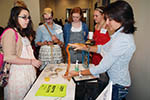 The Society of Women in Sciences and Mathematics, a philanthropic group in COSAM, hosted the eighth annual Leadership Symposium on May 8. The purpose of the symposium was to bring together and showcase distinguished women in the fields of sciences and mathematics in order to serve as leaders and role models for the next generation of women. The one-day symposium began with a panel discussion featuring accomplished women from various disciplines. Following the panel discussion, participants had an opportunity to visit with Auburn alumni who hold careers in the sciences and mathematics. There were also two breakout sessions where panelists gave short seminars on the benefits of pursuing a career in sciences or mathematics. The symposium ended with a luncheon featuring the Marie W. Wooten Distinguished Speaker, Sandra Rattray, Ph.D., vice president and head of Global Regulatory Affairs - Oncology & Companion Diagnostics for the Johnson & Johnson Family of Companies. Also during the luncheon, Krystyna Kuperberg, professor in the Department of Mathematics and Statistics, was named the 2014 Outstanding Female Faculty Award winner for her tireless dedication to teaching and mentorship of students, especially female students, in COSAM. For more information on SWSM, visit the website. The Society of Women in Sciences and Mathematics, a philanthropic group in COSAM, hosted the eighth annual Leadership Symposium on May 8. The purpose of the symposium was to bring together and showcase distinguished women in the fields of sciences and mathematics in order to serve as leaders and role models for the next generation of women. The one-day symposium began with a panel discussion featuring accomplished women from various disciplines. Following the panel discussion, participants had an opportunity to visit with Auburn alumni who hold careers in the sciences and mathematics. There were also two breakout sessions where panelists gave short seminars on the benefits of pursuing a career in sciences or mathematics. The symposium ended with a luncheon featuring the Marie W. Wooten Distinguished Speaker, Sandra Rattray, Ph.D., vice president and head of Global Regulatory Affairs - Oncology & Companion Diagnostics for the Johnson & Johnson Family of Companies. Also during the luncheon, Krystyna Kuperberg, professor in the Department of Mathematics and Statistics, was named the 2014 Outstanding Female Faculty Award winner for her tireless dedication to teaching and mentorship of students, especially female students, in COSAM. For more information on SWSM, visit the website.
Diversity & Multicultural Affairs News:
Summer Bridge Program starts this weekend
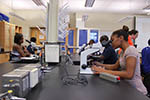 COSAM is hosting the 18th annual Summer Bridge Program from June 1-26. Summer Bridge is a four-week, residential program that engages highly motivated incoming freshmen from groups traditionally underrepresented in sciences, mathematics and engineering in activities that facilitate a successful transition from high school to the Auburn University campus. COSAM Dean Nicholas Giordano will welcome 29 students and their parents on Sunday, June 1, during the student and parent orientation. Summer Bridge emphasizes academic enrichment, enhancement of study and time-management skills, community and network building, and career awareness. The program includes sciences and mathematics lectures and workshops, as well as field trips to research, healthcare and industrial sites. Summer Bridge culminates with a luncheon and awards ceremony featuring outstanding motivational speakers. The major goal of Summer Bridge is to provide pre-freshman students with the academic enrichment and social support needed to excel in their chosen career paths and thus, become outstanding graduates of Auburn University. For more information about COSAM's Summer Bridge Program, contact Bianca Evans at 334.844.4663 or send an e-mail to dropincenter@auburn.edu. COSAM is hosting the 18th annual Summer Bridge Program from June 1-26. Summer Bridge is a four-week, residential program that engages highly motivated incoming freshmen from groups traditionally underrepresented in sciences, mathematics and engineering in activities that facilitate a successful transition from high school to the Auburn University campus. COSAM Dean Nicholas Giordano will welcome 29 students and their parents on Sunday, June 1, during the student and parent orientation. Summer Bridge emphasizes academic enrichment, enhancement of study and time-management skills, community and network building, and career awareness. The program includes sciences and mathematics lectures and workshops, as well as field trips to research, healthcare and industrial sites. Summer Bridge culminates with a luncheon and awards ceremony featuring outstanding motivational speakers. The major goal of Summer Bridge is to provide pre-freshman students with the academic enrichment and social support needed to excel in their chosen career paths and thus, become outstanding graduates of Auburn University. For more information about COSAM's Summer Bridge Program, contact Bianca Evans at 334.844.4663 or send an e-mail to dropincenter@auburn.edu.
|

